Interviews, PhotographyImages of Iceland: The Elli Thor Magnussen Interview
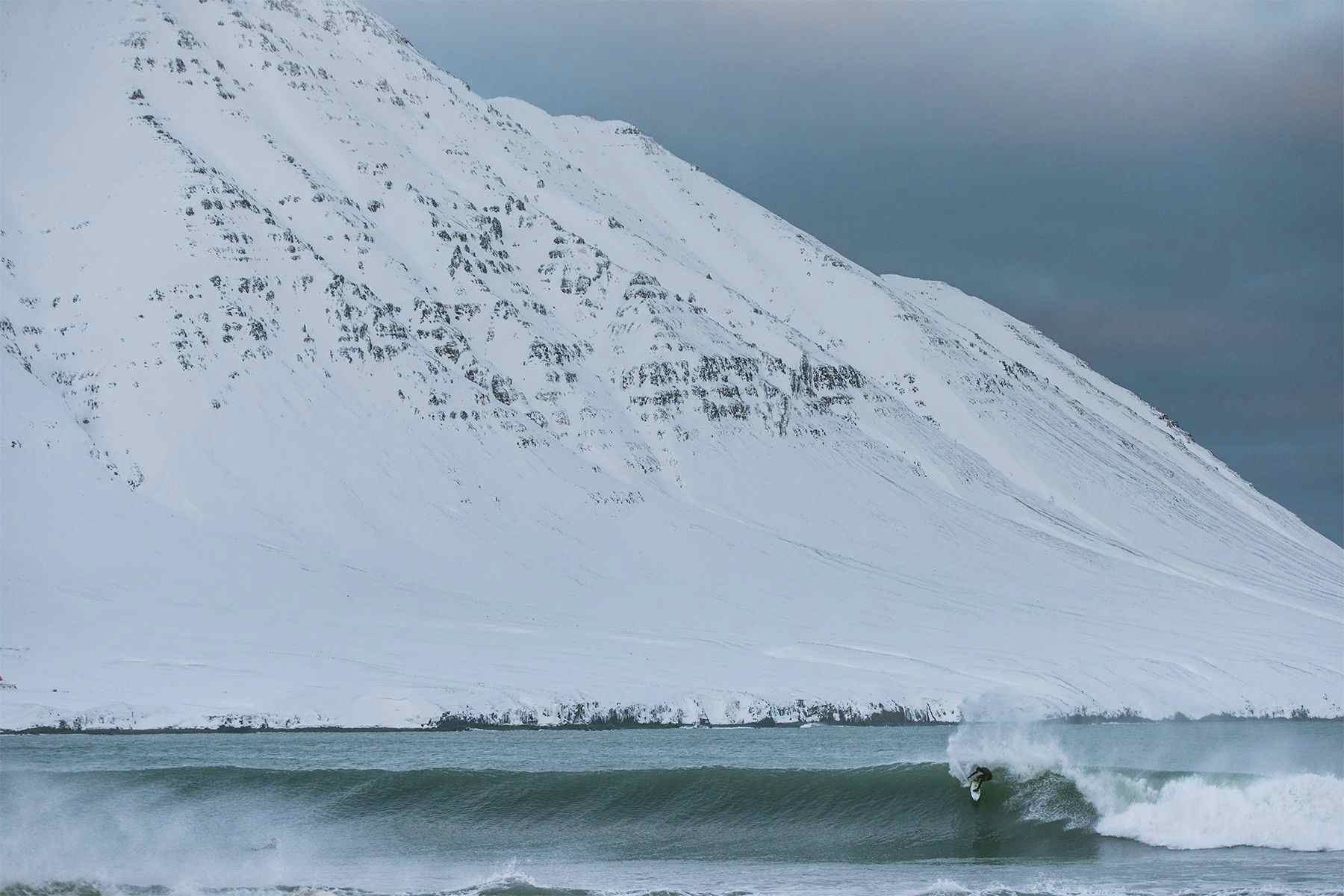
Surfing in Iceland is still in its infancy, but in just a few short years it has gone from being a fringe destination for the adventurous few to the location that no adventurous surf project can do without. Alongside its stunning landscapes, this North Atlantic outpost has great waves, making it a magnet for photographers and filmmakers. Whilst visitors come and go, one born-and-raised Icelander has made his name here as one of the world’s leading cold-water surf and adventure photographers. Erlendur Thor Magnussen, or Elli for short, has produced a body of work that defines surfing in Iceland. Surf Simply recently sat down with him for a chat before he embarked on another winter of high latitude adventures, and you’ll be able to hear our conversation on an upcoming episode of the podcast or read our interview and enjoy a gallery of Elli’s beautiful and evocative imagery below.
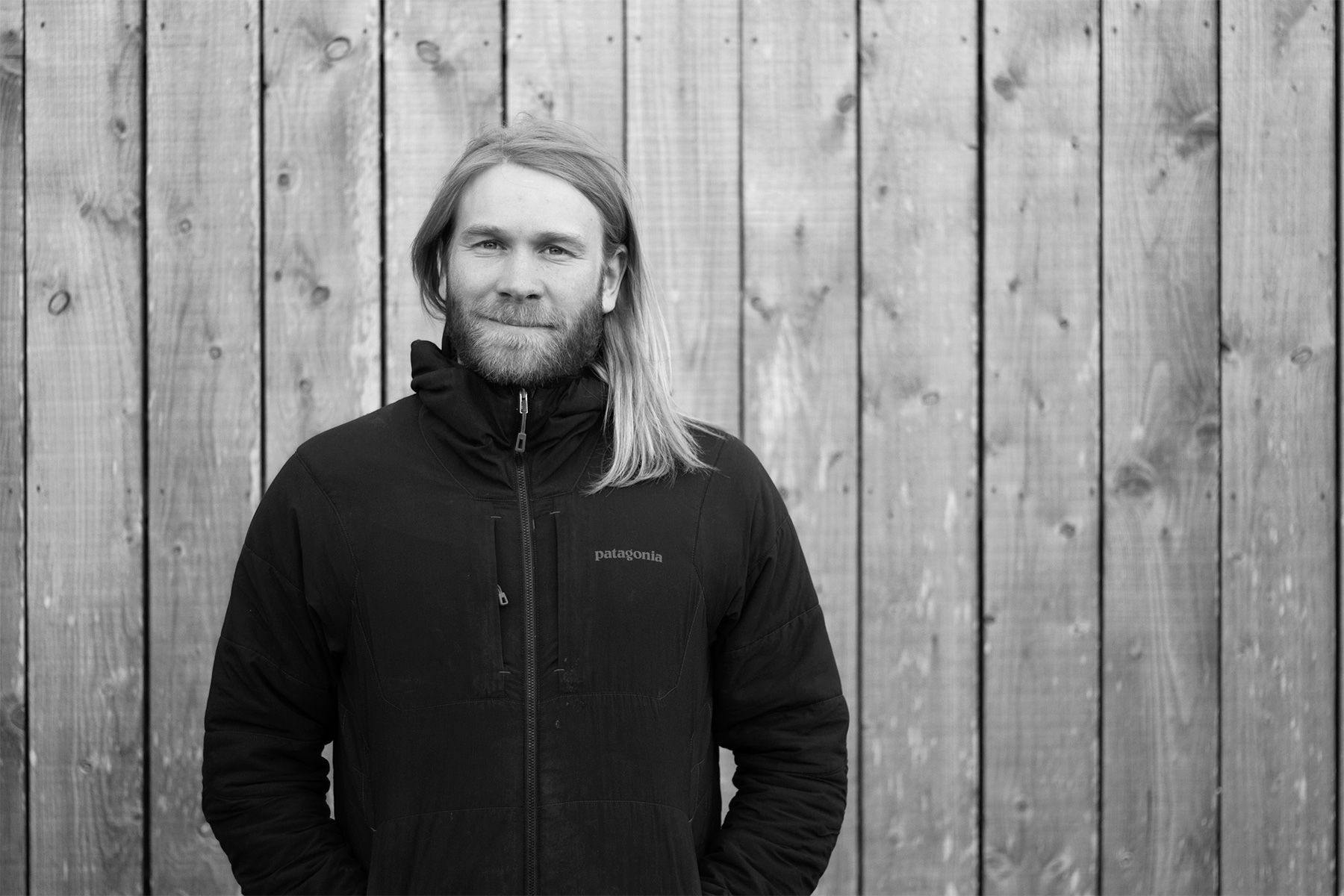
Before we talk about how you got into surf photography, I’m interested in how you got into surfing in the first place in such a challenging environment, growing up in Iceland.
I started snowboarding when I was really young, like nine years old, and there were only a few people doing that. And then it progressed and me and my friend, we were sponsored by this snowboard shop – like, the only one in Iceland – and they were a little older and they heard about surfing. There were some Americans from the army stationed at the naval base. They were going surfing in the summers, and then one of my friends, when we were about 18 or 19, he went to France and he brought back two surfboards and that’s how we started. We didn’t know anything, like I think my first session surfing was wearing neoprene kayaking long johns and a dry top, you know. There was no proper kit. We just tried it and hoped that there would be waves.
Whereabouts was that? Where did you grow up in Iceland and where were the places that you were surfing?
I grew up in Reykjavik, the capital city where two thirds of the population live. And it was around there. It’s where the most consistent surf is, and for the first I-don’t-know-how-many-years, maybe 4-5, that’s mainly where we would surf.
What’s special about surfing in Iceland?
It’s almost like a little bit of a different sport there, and that’s what I enjoy about it. It is challenging and it is a privilege to grow up as a surfer there because we are the first generation and we have been lucky enough to have a full-on big island to explore and to find new waves on. With the weather it’s kind of like half mountaineering and half surfing, sometimes. I enjoy that – all the driving and having to deal with the bad weather. That for me is a big part of it.
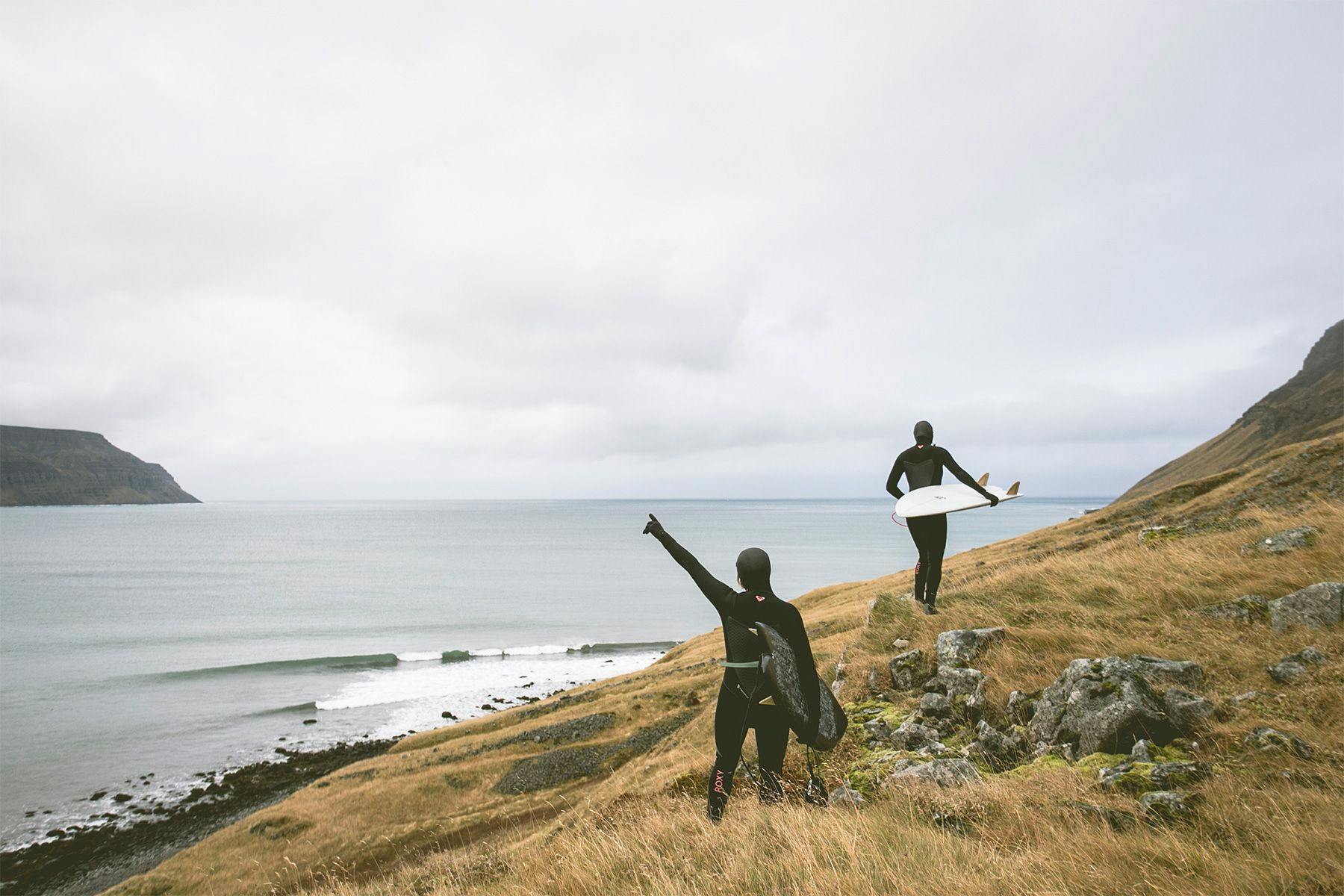
I guess you get the enjoyment from the challenge and overcoming adversity?
Yeah, it’s like sometimes when you are out in really bad weather, the wind and rain or snow, it’s not the most enjoyable environment, but afterwards it made it feel even more worth it.
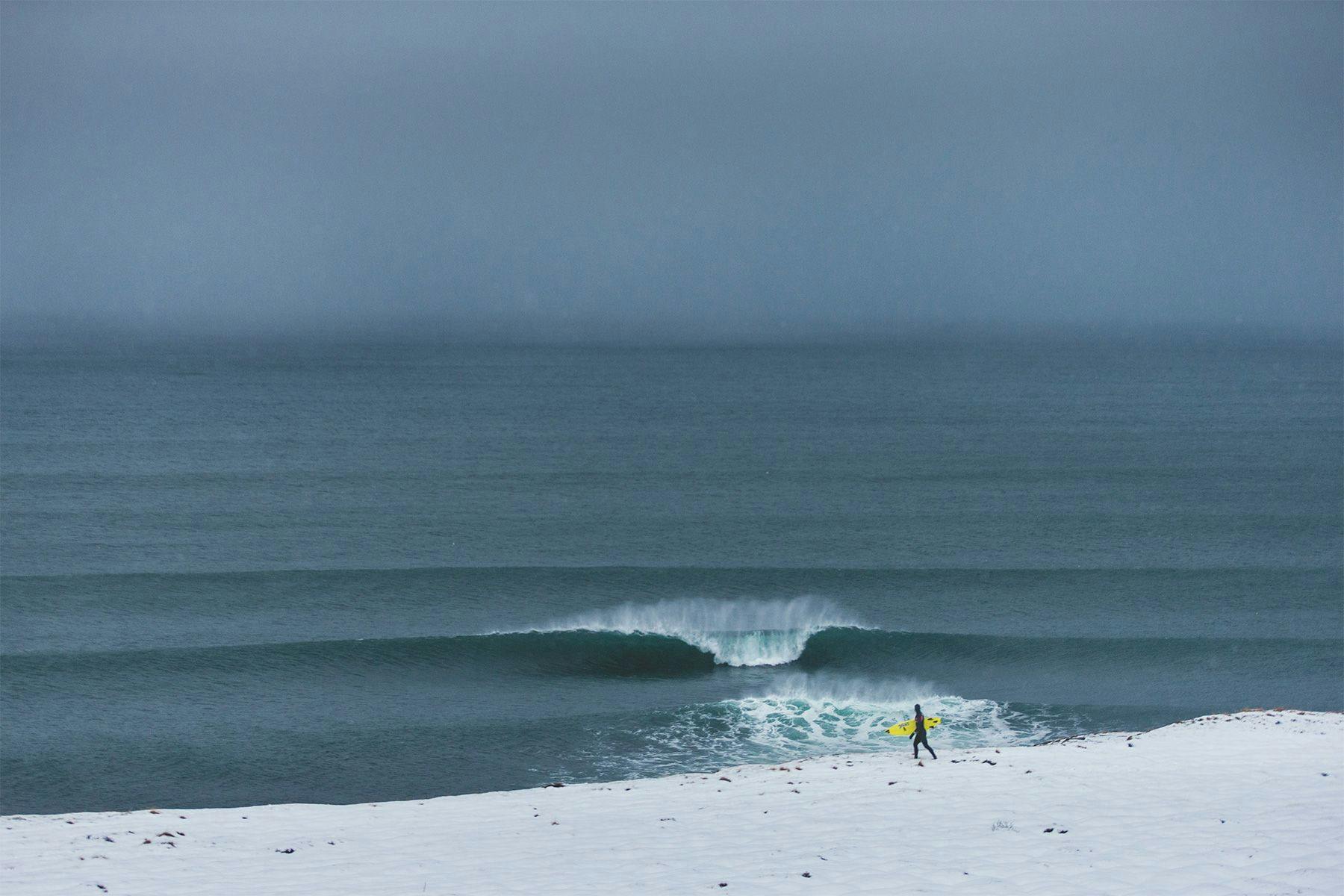
That was how you got into surfing. How then, did you get into photography?
I did the classic photography course at school – probably when I was like 13 – learning analogue film photography, and ended up going with a few people from Iceland as part of a European Union initiative where they picked some people from all over and we did a show in Greece. So I got into it then. I’m better now because I’m older and I went on to study it further, but back then I was so bad with the film, I would take film travelling in Europe on snowboard trips and leave rolls of film all over the place. It wasn’t serious or anything, but then I was travelling and I brought my first real digital camera and it became something more serious.
How did you then progress from a passion for surfing and an interest in photography to becoming Iceland’s foremost surf photographer?
When I got that first camera I was actually in Nepal. We were white-water kayaking there, and I would just photograph my friends. And then I was doing that when we were snowboarding and surfing, and skating. And then, I don’t know, there weren’t any good surfers in Iceland at the time so it would just be what we were doing. Sometimes we would get pro surfers coming over and I’d be super excited to have someone good to photograph. Then I figured I’d pursue photography properly so I worked as an assistant for an advertising photographer for two years. I went to study photography at the art school in Falmouth in the UK and then it just progressed from there.
For the last few years surf trips to Iceland have featured heavily in surf films, in online edits and in magazines. How has that affected Iceland’s surf scene over the time that you’ve known it – this really rapid trajectory?
Yeah, I mean that’s a bit of a double-edged sword. I was surfing before I started being a surf photographer, and I love surfing – it’s taken over my life. I’m a part of, not so much advertising it, but showing it to everyone. The thing is that the change in local surfers hasn’t been big over the last ten years or so. It’s still around 15-20 local people who surf right through the winter. We all know each other. And then maybe there’s a bit of a bigger group of people who do it, like so many people everywhere, just a few times a year through the summer. I think it’s a tricky place, even if you’re an experienced surfer, to come and have five days or a week and to score waves. Even in the winter when we have constant swell because it takes a long time to figure it out. If you were to have asked me this five years ago, I would have said, “oh, it’s going to blow up” but it hasn’t. It hasn’t affected us so much because it is a fickle place.
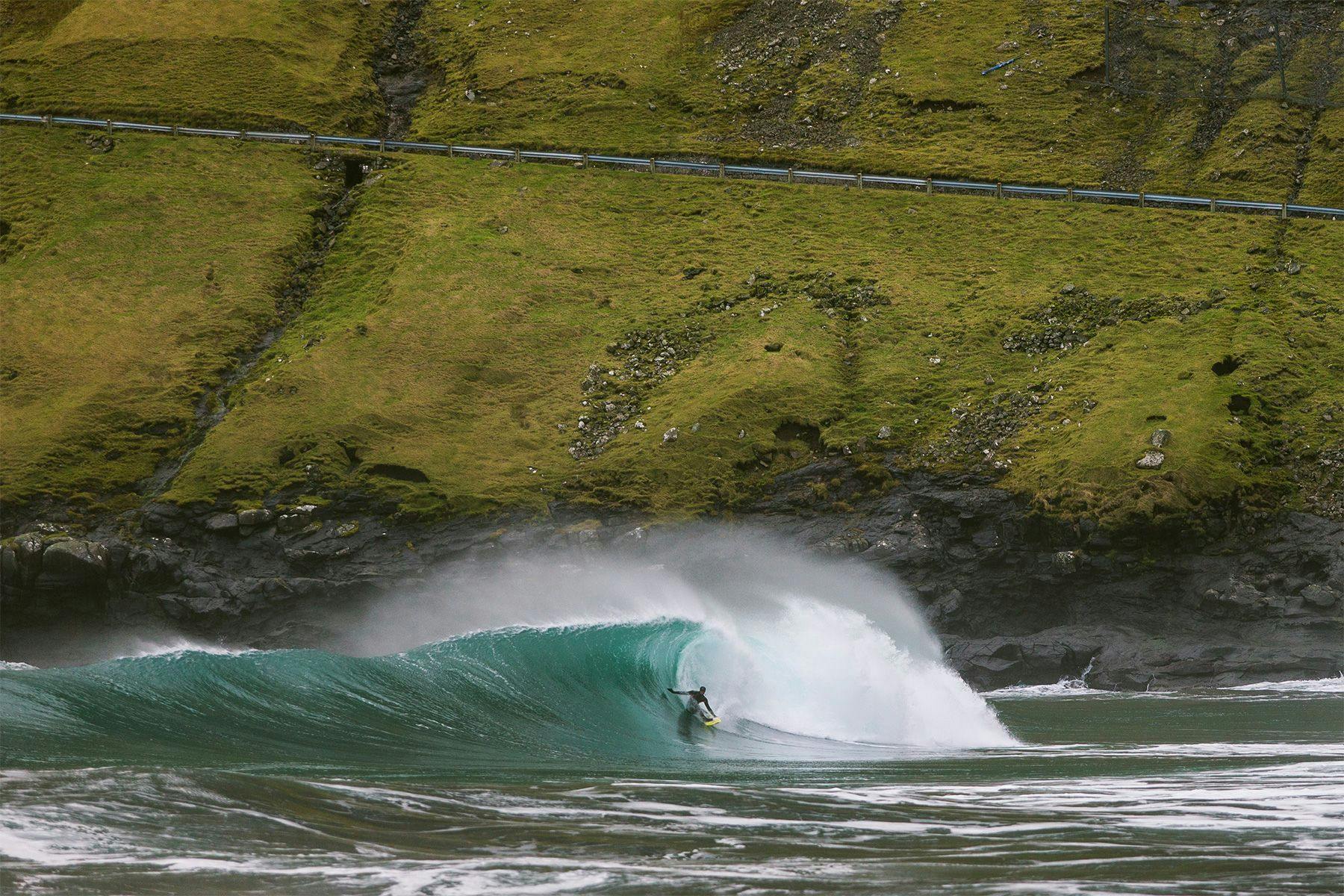
Is it a case that all of the exposure of Iceland provides an awful lot of entertainment, but doesn’t necessarily drive everyday surfers there on surf trips. Therefore, of all the people getting off a plane and collecting their boards at the baggage carousel a disproportionate number must be pros on photo trips?
That is exactly it. A lot of the films, like even Castles in the Sky – when that came out that was one of the first films featuring Iceland and that wasn’t even filmed in winter. That was late fall or something. They were hit pretty hard by snow and so it might be played up in some instances, but it is definitely hard. You are driving so many sketchy roads over ice, and it’s just not for everybody. Some people see it and might be like “oh this looks great” but I think that a lot of people think: “I don’t want any part of this!”
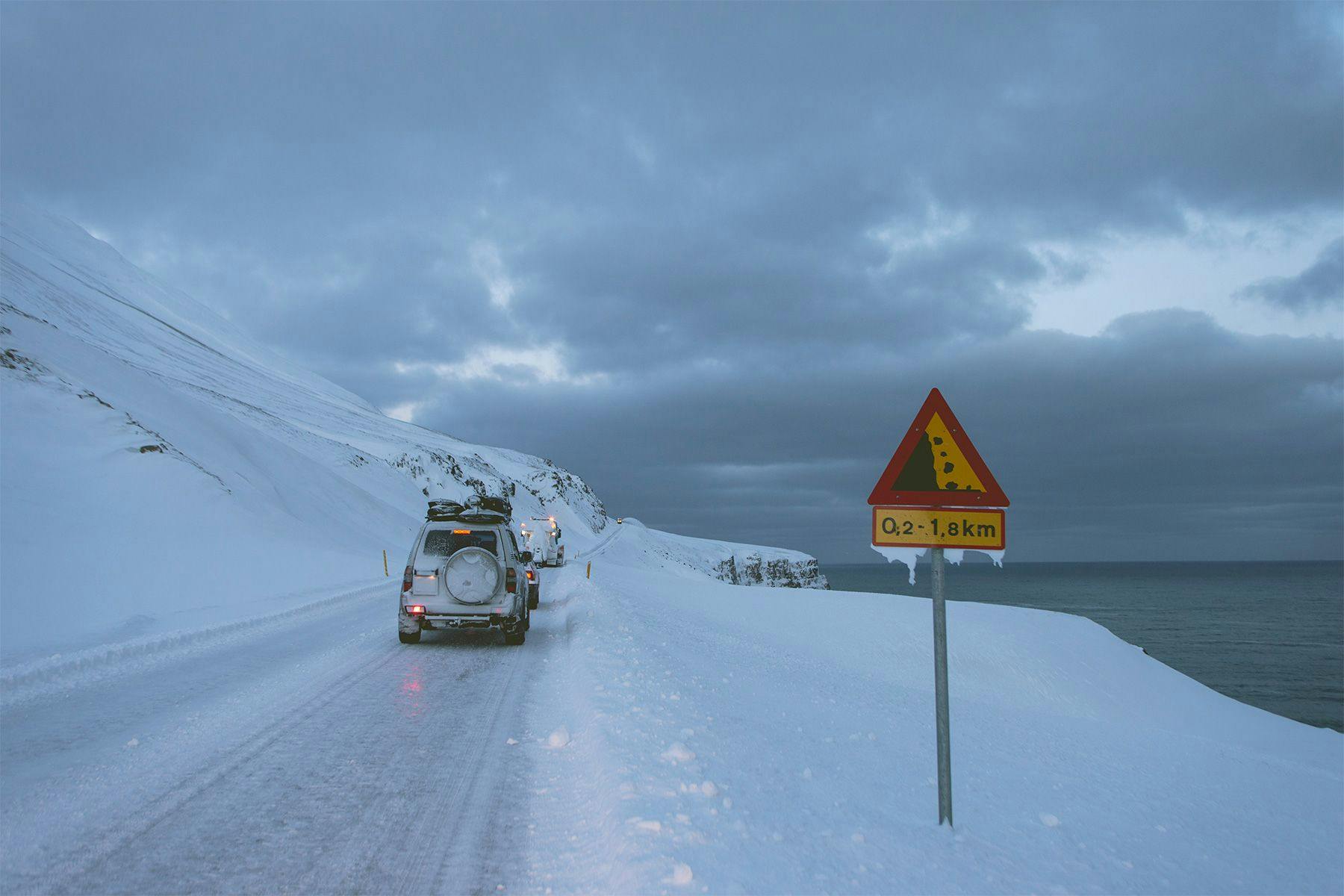
And a lot of those guys are being paid to be there, or it’s a part of their efforts to keep a high profile.
Yeah and a lot of the people who really like it there, they keep coming back again and again. They learn and they meet the locals – because it is hard to just arrive there and expect to score. It takes a lot of inside knowledge.
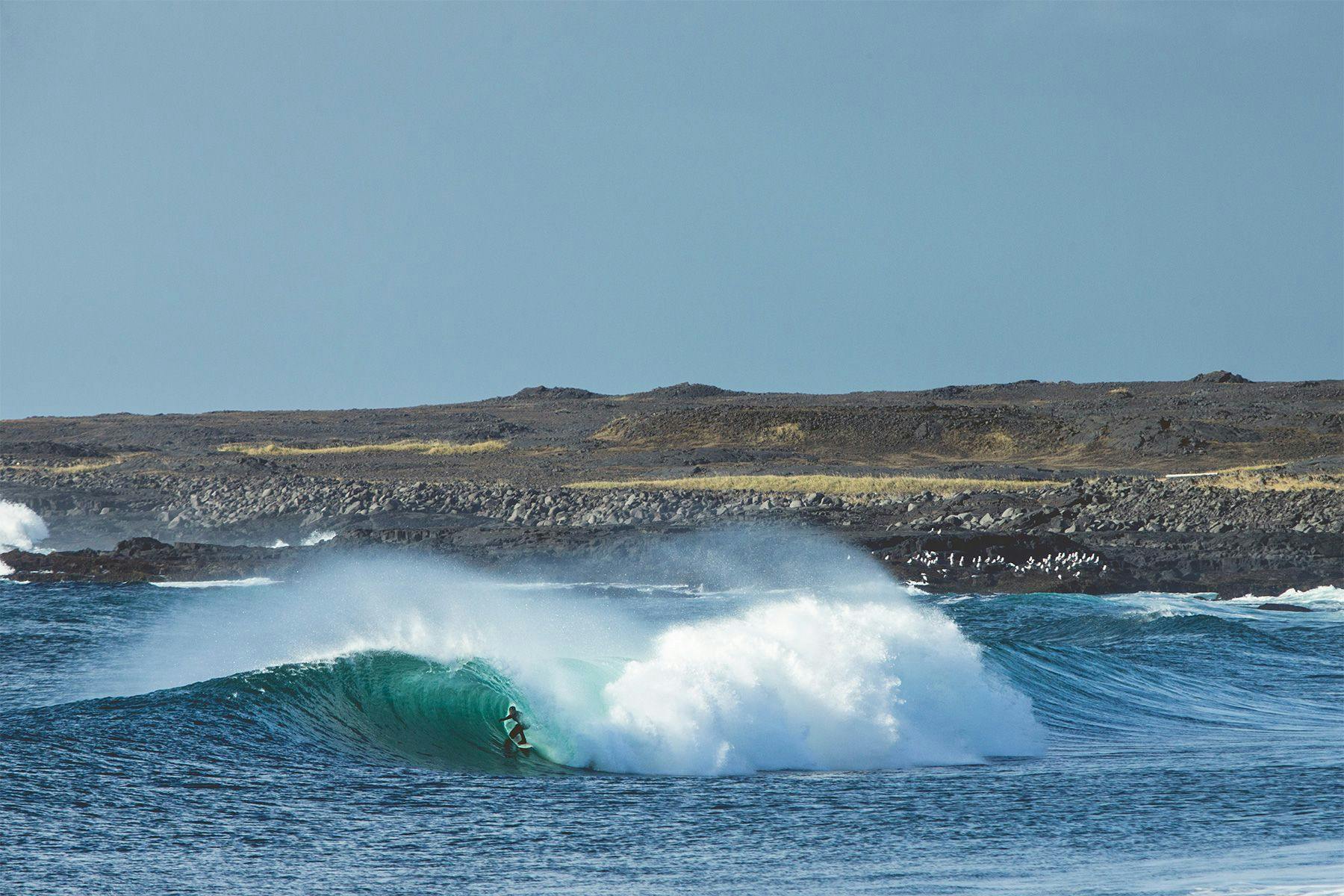
After the financial crisis of 2008, when the currency crashed and Iceland’s banks collapsed, Iceland has done an incredible job of reinventing itself in terms of the tourist economy and becoming an outdoor adventure destination. It was almost like someone threw the switch and said: “we need to do something different”. It was probably one of the most serious elements of the 2008 financial crisis, but the way that Iceland’s rebounded… as an Icelander, can you talk us through that period of national reinvention?
That’s the biggest change that I have seen, being an Icelander and being someone who grew up basically doing a lot of outdoor activities (my parents were on the mountain rescue team); we have something like two million plus tourists visiting each year to do adventure things. When I go to places that I used to go to camp or to the hot springs and where there would be nobody else, now they’re destinations. But it has done some really good things for the economy.
I used to work as a rafting guide so my friends and I worked in tourism, and there was a little bit of growth in tourism before the crash but at that time it was also really expensive to travel to Iceland.
When it crashed a number of things happened; it was cheaper to get to Iceland, the government put a bunch of money in advertising and to promote Iceland as a destination, and then the eruption happened. Everybody knew about the name, just because of the eruption. That was almost like branding! It’s like no publicity is bad publicity. People knew the name and it just took off, and it’s been crazy to see it.
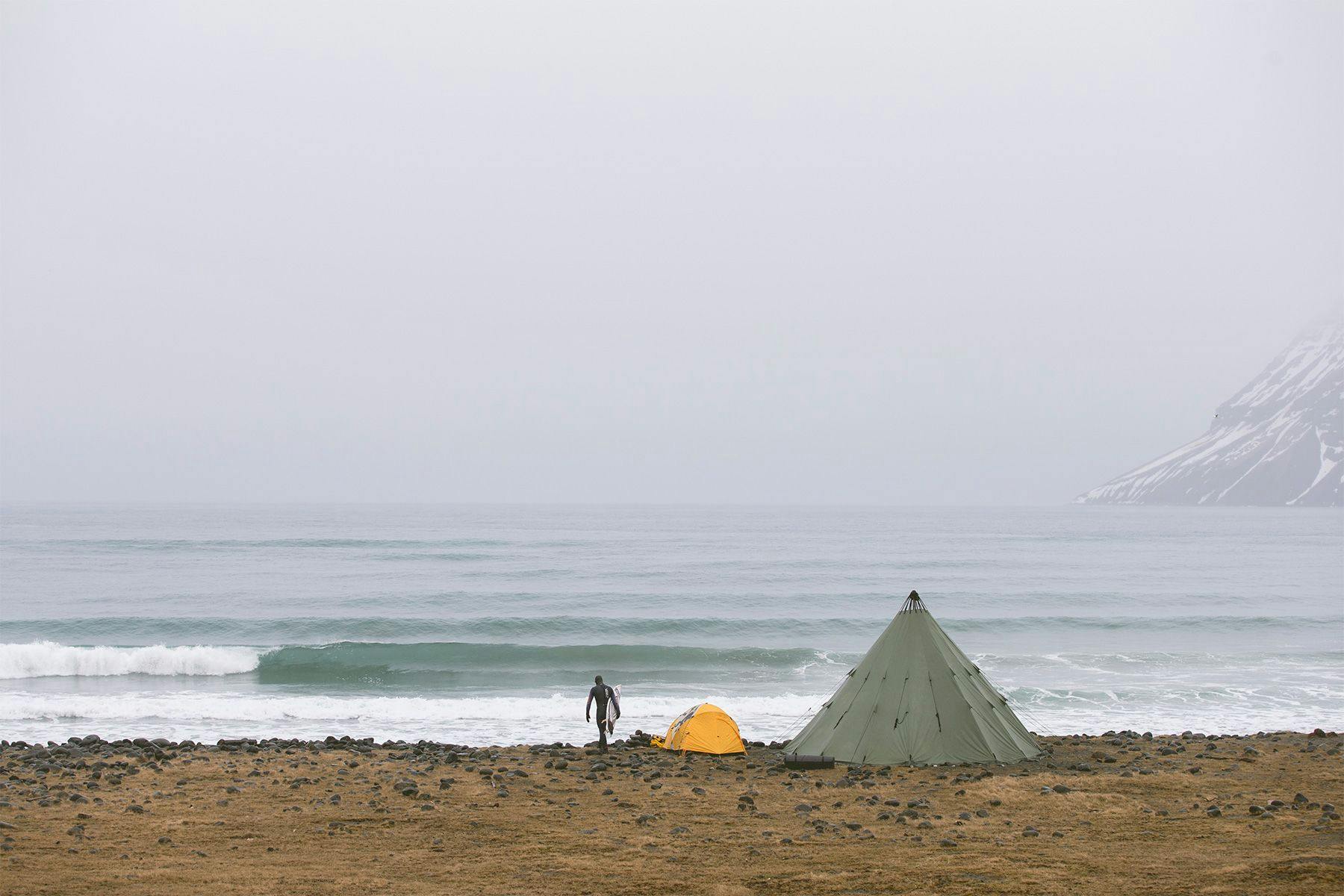
Where are the special places to you in and around Iceland, and why?
I did a lot of travelling. I started surfing in Iceland – I didn’t surf anywhere else to begin with – and then I started travelling for surfing for about four years and went to warm water places like the Philippines, Hawaii, New Zealand and places in Europe – all kind of places. But I would just come back and get both the same quality of waves, and with less people. And I thought … I don’t know… You know when you’re young and you don’t appreciate what you have sometimes? When you get a little older you realise “oh, I actually have this nice little place on my doorstep”, and I just love the mountains and the way the mountains go right into the ocean. It’s very special.
For me it’s the northern part of Iceland; the colder part; the bigger mountains and the fjords. And then Greenland, that is one place that I have been lucky to travel to as a photographer, I don’t know, maybe twelve or thirteen times. That place is a different deal. As far as surfing goes that place is not good, but it’s just landscape on a different scale. It is one of the last true wilderness areas. You could go for days upon days without seeing anything that reminds you of humans. No fences or power lines or anything like that.
With so much material on your doorstep I imagine that everywhere you look there are photographic opportunities, and with the world’s best surfers coming to you, do you ever get the chance to explore surf opportunities beyond the main spots in Iceland or further afield? Are there still places that you want to go or places that you really value going to?
Yes. When I’m not on trips or working, basically what I do with my spare time and with my friend Heidar Logi, who is basically Iceland’s only professional surfer, we just drive all over. Because it is quite big, and there are certain areas where you might not get the right conditions for a couple of years, you have to explore. We do a lot of that, just on our own, with no agenda other than getting waves. I’ve also been lucky enough to go to the Faroe Islands twice, with Justin Quintal and a few other guys, and it’s a beautiful place and the people there are amazing. We got some fun waves; it’s not the most epic place for surf but is a great trip.
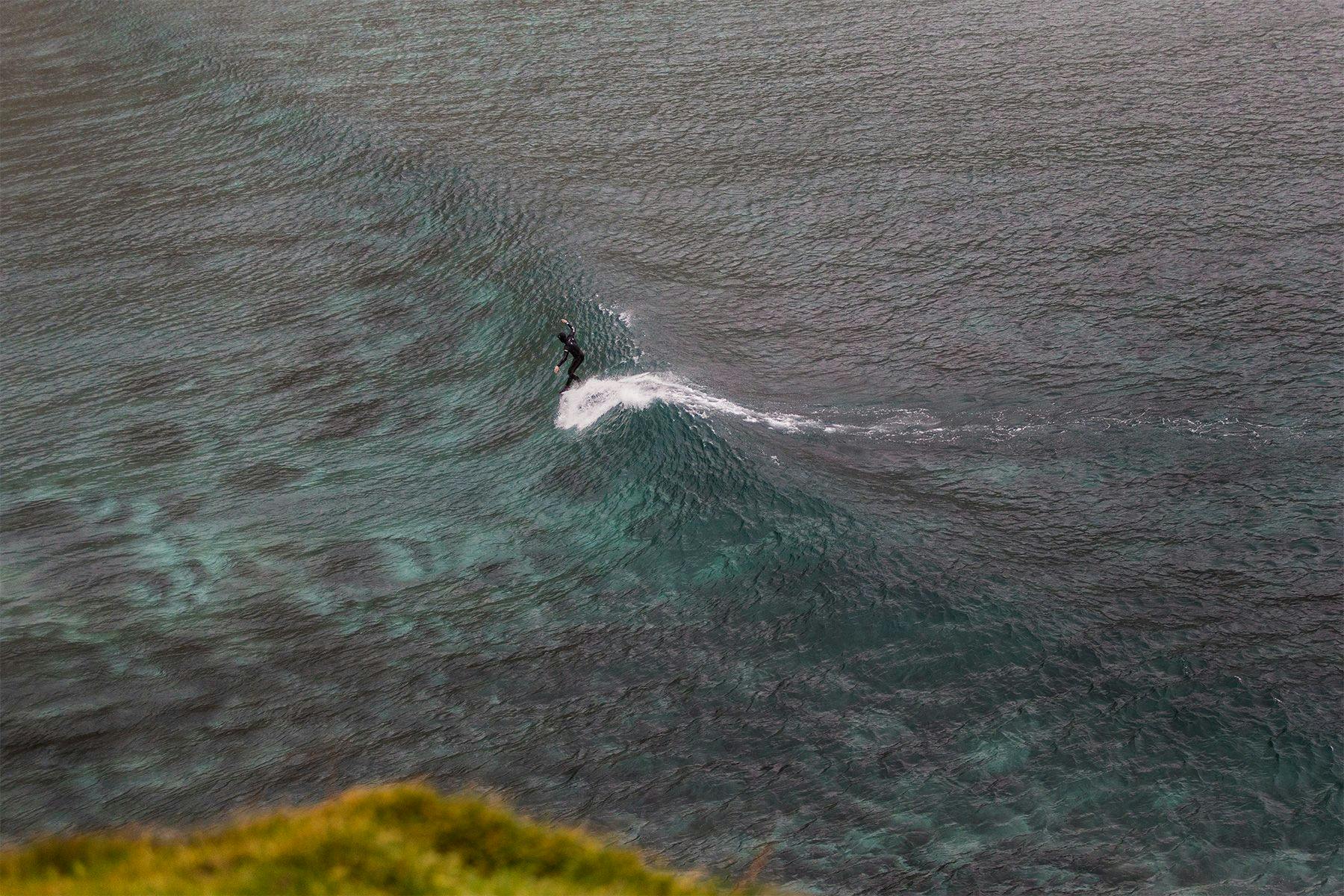
Do you find that most of the jobs that come in for you are cold water gigs?
Yeah, but that’s where my interest is. I’ve travelled to warm water places. I mean of course the dream would be to be in warm water places and explore and find new waves but let’s face it that’s almost impossible. I’ve missed that time and place in history. And that’s the excitement for me, as a surfer and a photographer, to be able to do something new and discover something.
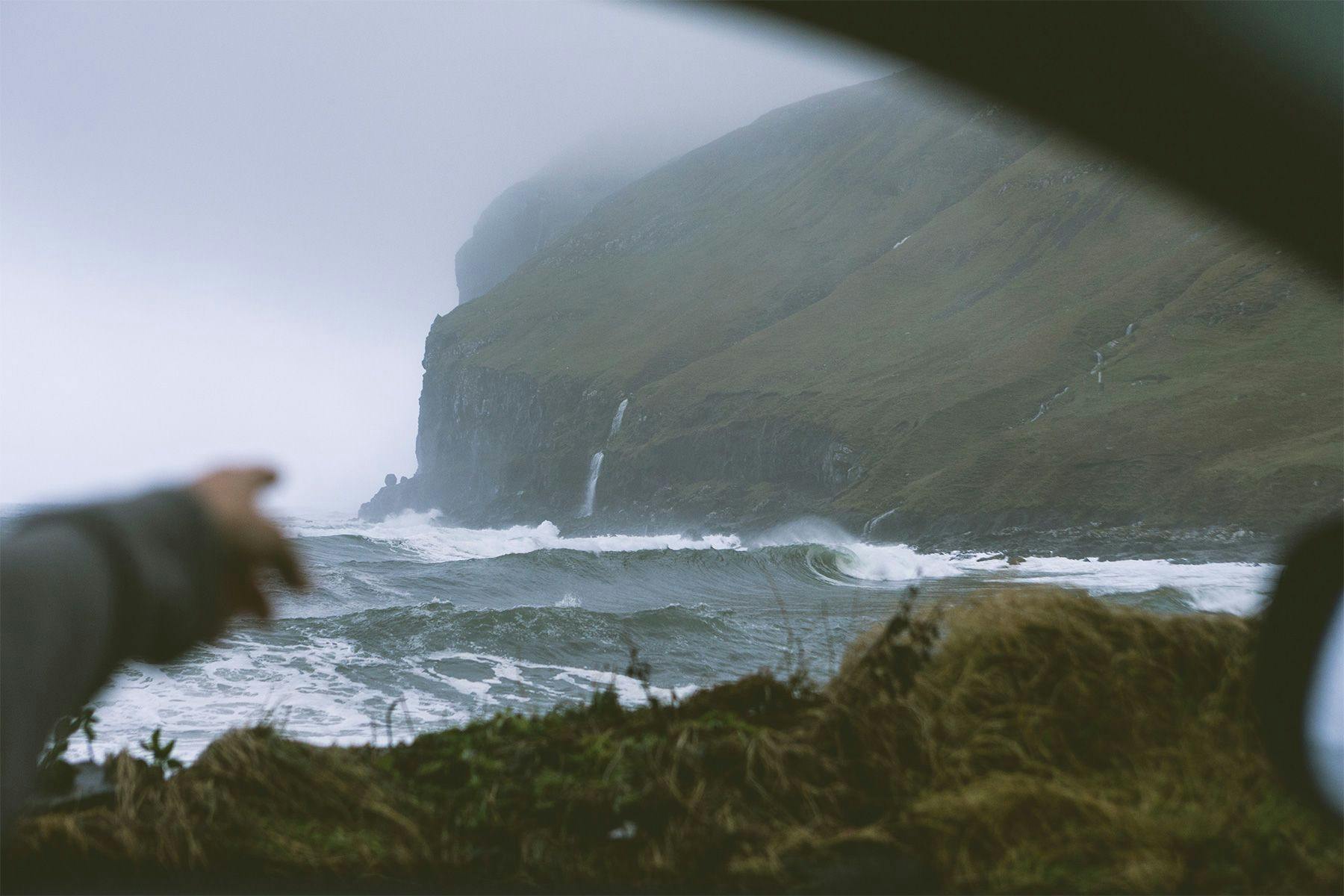
Let’s talk cold. You grew up with it, but it presents additional challenges – particularly to surf photographers in terms of beyond just surfing in cold water but shooting in the water, or having to think about your kit. You must have to consider things like the lifetime of batteries being affected, or having access to charging and so on in quite remote wilderness areas. How do you work with the cold?
Obviously I am used to it from growing up with it. My parents were members of the mountain rescue team in Iceland for years, so I grew up learning how to dress for it. That is the number one thing, because basically if you’re not swimming in the water and you’re a surf photographer you’re standing mostly still for several hours and that is the first thing. Having only wool clothing next to your body, having down jackets and all that. That is something I knew as a kid. You basically have to have tough cameras. Some brands you find out are better weather wise, because you are always exposing them to both rain and snow. Batteries, you find out that batteries last longer when you use them and you keep the ones that you aren’t using inside your clothing next to your body so that they’re quite warm when you start using them.
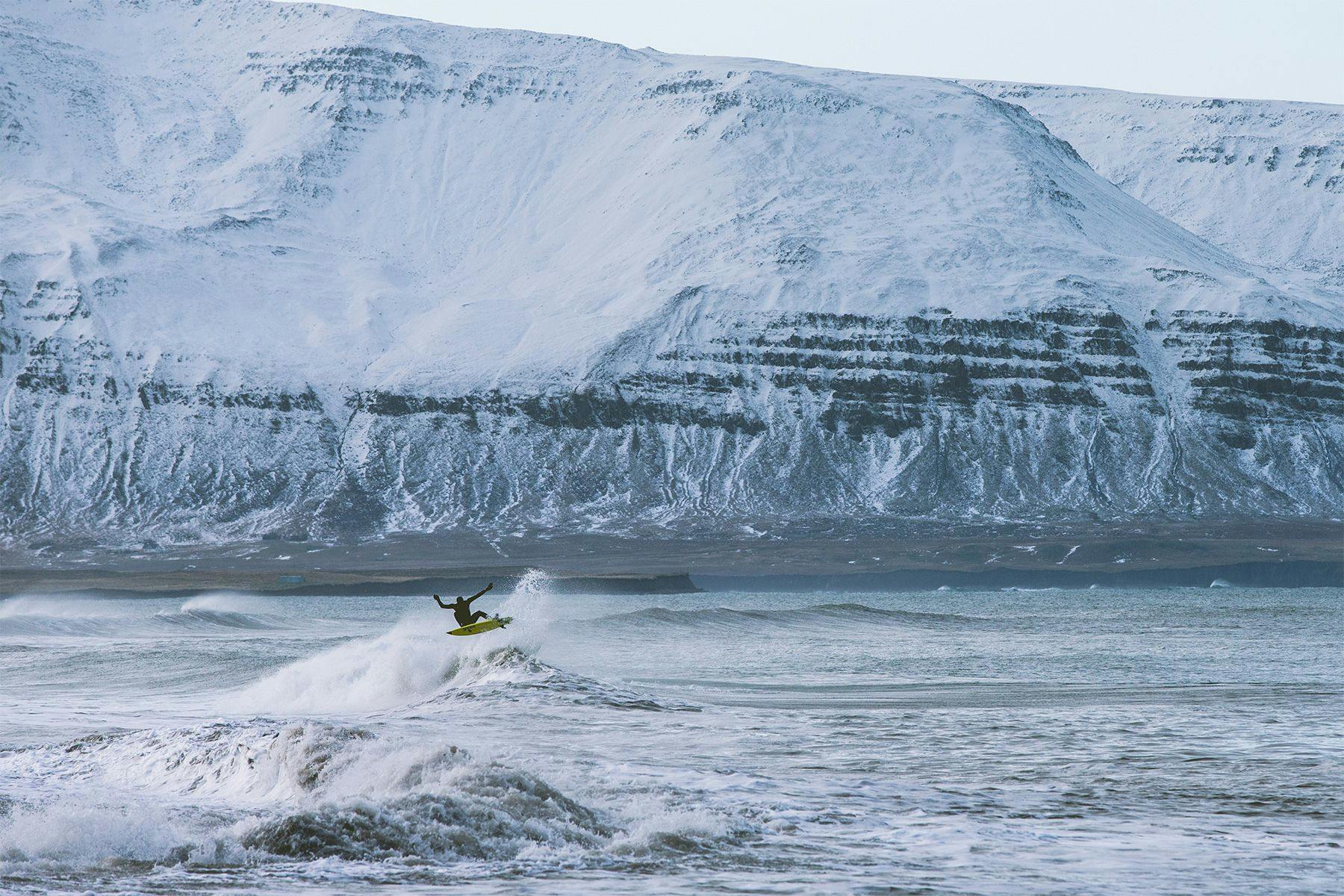
Do weather conditions force you to shoot predominantly from land and therefore does that affect your style and your compositions, or is it the case that any chance you get, you’re getting in the water?
I love getting in the water. It’s more down to the spot than the weather. I think with every surf photographer if you see something that you want to shoot, you’re going in no matter what and it’s just a case of how long you last, you know. How used to it you are.
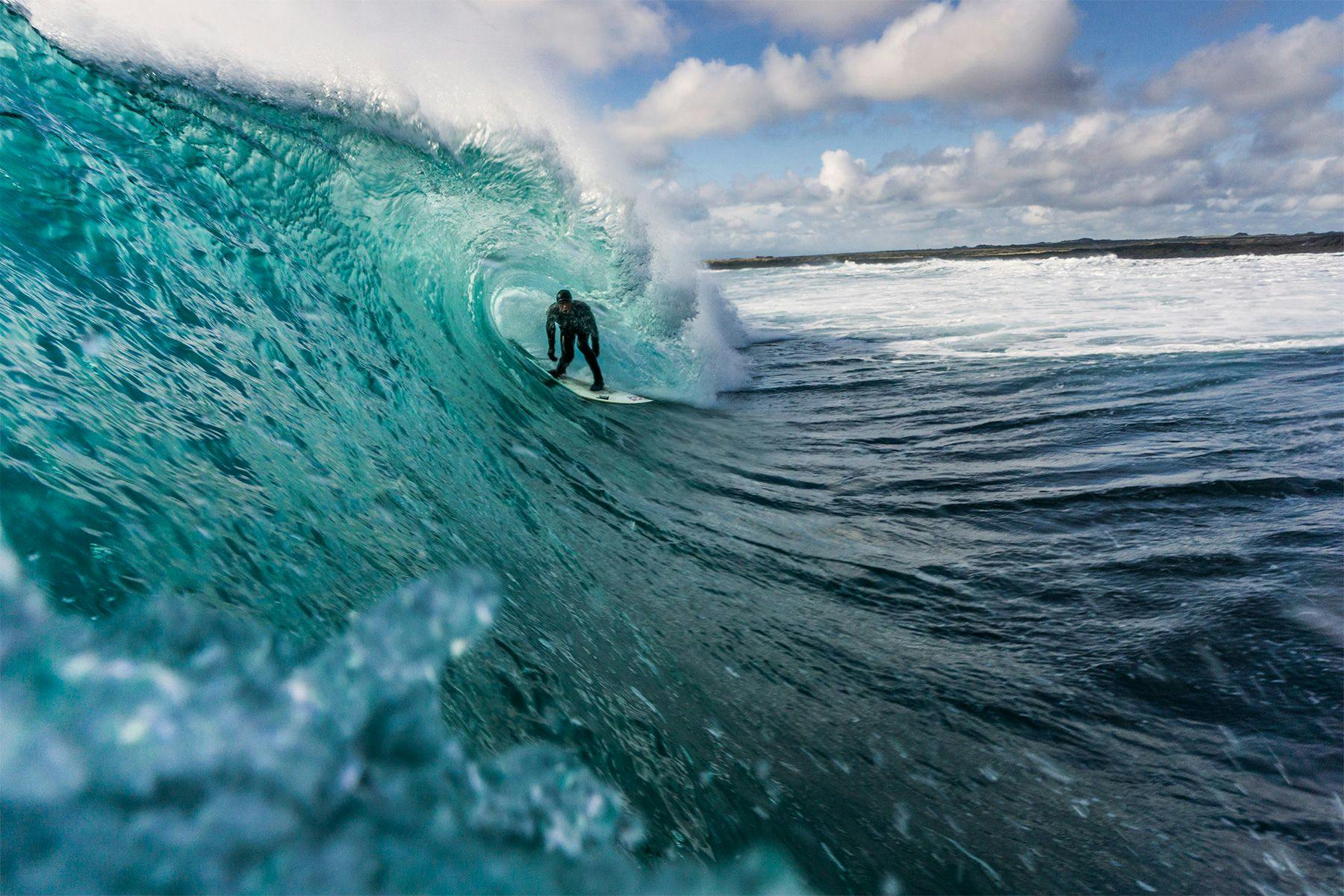
How do you go about shooting in the water? We were talking about the cold but things like going from a warm cabin to cold water and condensation issues and those sorts of things… trying to stay in there for as long as possible. Do you shoot with gloves on? How do you go about it?
So that’s one thing with shooting in really cold weather; if you are in a warm car and you bring stuff out and then bring it in it’s going to get condensation all over the place. When you’re in the car you don’t want your camera to get too hot so you keep it in the bag, and the same with the waterhousing – you don’t want to pack your camera in a super warm water housing and take it out, so that’s something to have in mind. And then yeah, I’ve tried all kinds of wetsuits and I’ve found the ones that I like and feel give me more warmth than others. And then the worst thing is that you can’t wear mittens, which are the warmest. That’s what all the surfers do; whenever we’re surfing in January or something we all wear mittens, but I can’t wear them when I’m shooting because I can’t pull the trigger so I wear like, mittens with three fingers in a mitten and then a single finger glove, like split toe boots. That’s as close as I can get, but it’s definitely not as warm as the others.
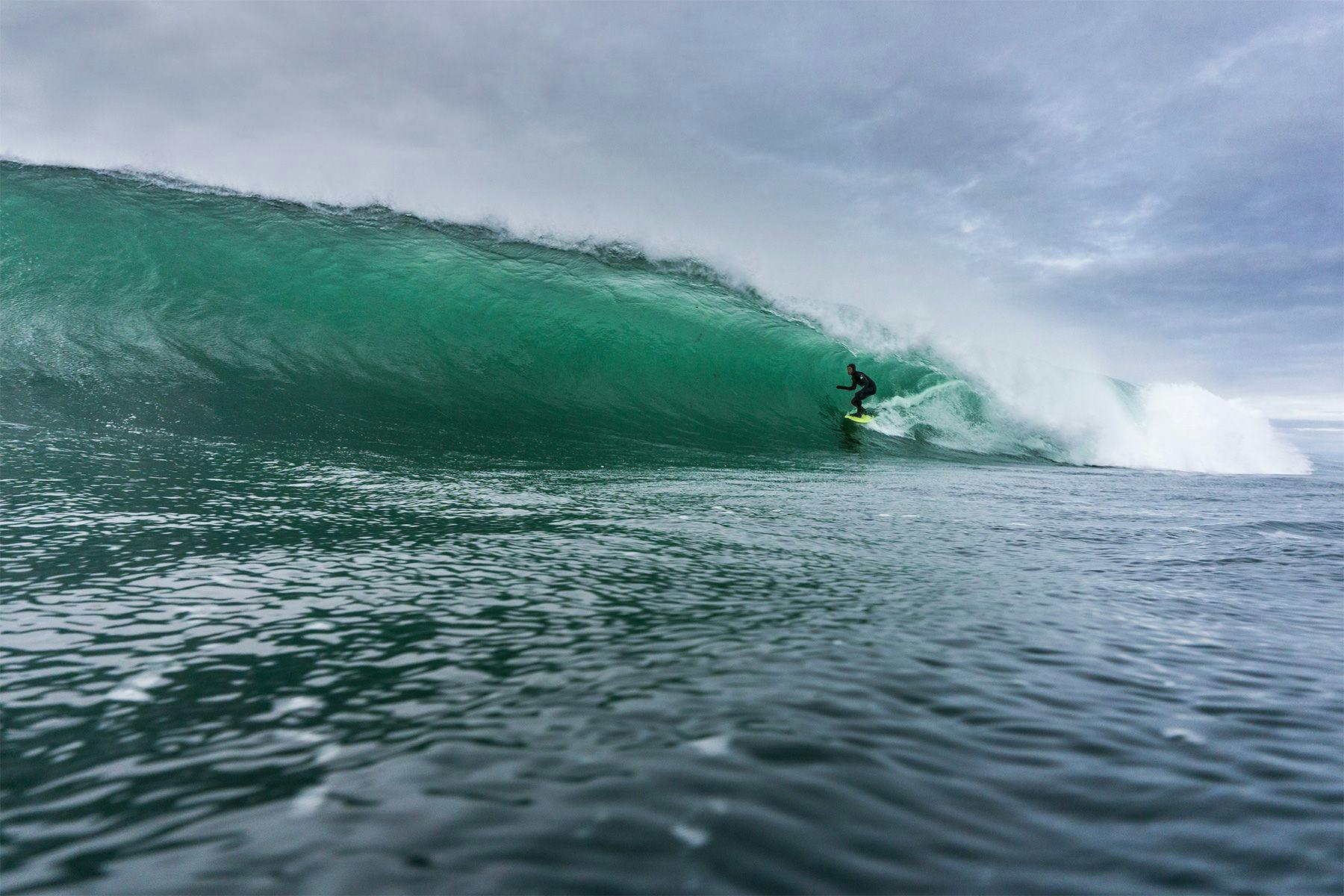
What have been your favourite projects that you’ve been involved with, because as well as your own work I know that you’re working with a lot of the other photographers and filmmakers who come over, helping them out and partnering up with them. Are there any that stand out as being pretty special?
We did a movie on our own called The Accord, and we toured with it, and that was me and this guy from the states and then Heidar. Filming was something that I didn’t know a lot about – I was a photographer. We did this movie, and we wanted to it a bit differently. It toured around and won a few awards and stuff like that, so that was a fun one to do because it was new and it was a homegrown Icelandic movie. But then, I mean, there are so many fun projects. I’ve done a lot of things with Chris Burkard, he’s a really good friend, and it’s always fun to be with him. We went to the Faroes, we’ve done projects in Iceland several times. Usually it’s Justin Quintal and a core group, maybe with a few new people, but that’s always nice when you can build a relationship with people. It makes it a familiar thing. Dane Gudauskas – he’s one of my favourite humans and we’ve done a lot of trips together. He did his own movie called Earth and he came over with Tanner and that was just a pure, fun trip. It’s different with each project. Some can look super fun but you work 14 hours a day even if it’s in the middle of winter – you’re shooting in four hours of light but then you’re shooting the northern lights in the evening until 2 o-clock and then waking up to drive six hours to wherever the wind might be good. Some of them are like that, and some are like the project I did with Dane where it’s just pure fun.
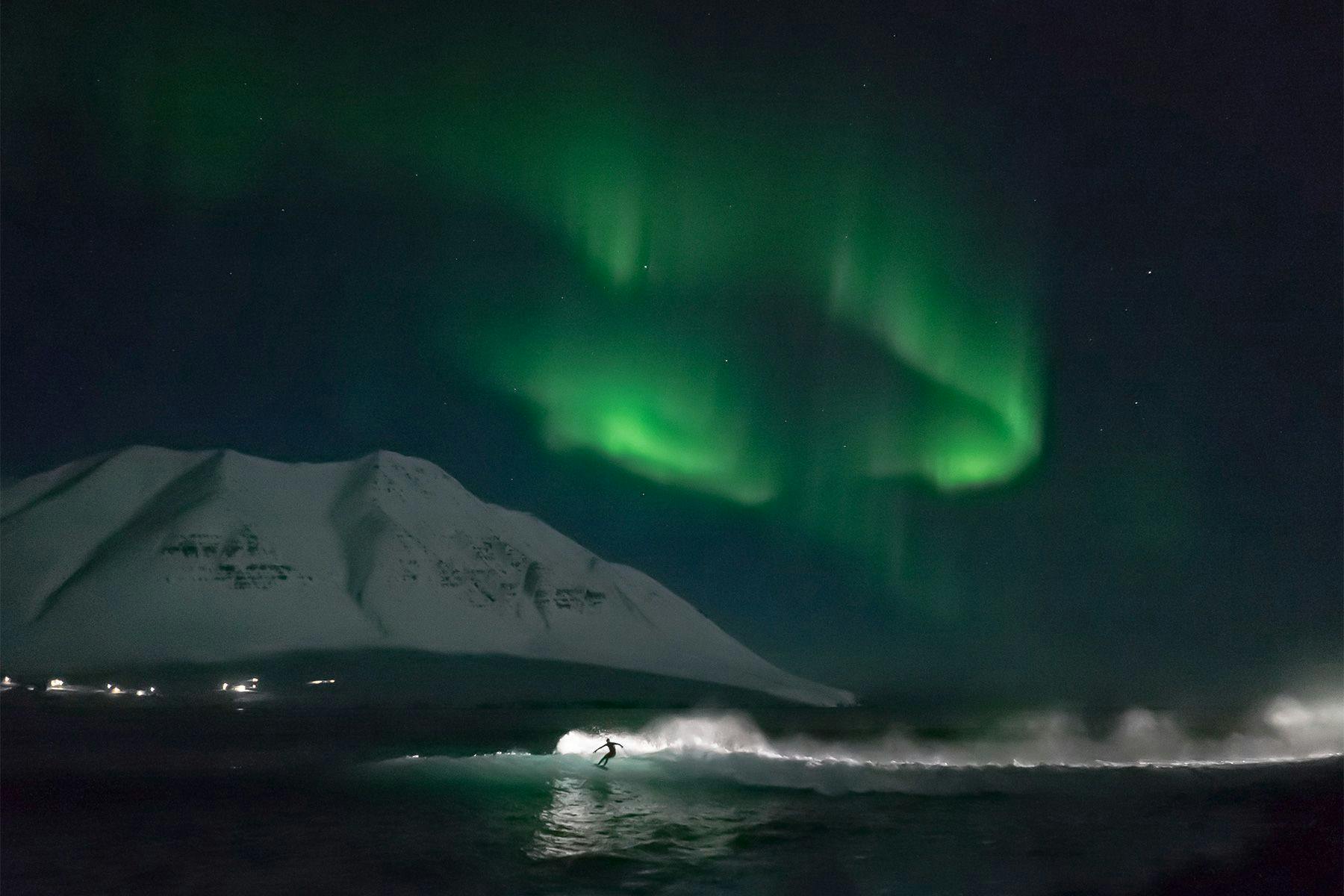
So you ended up working with Dane on Chris’ projects and then again on his own projects?
Yeah. I met Dane when I went with Chris to the Faroe Islands with him and Justin Quintal, Tyler Warren and Sam Hammer. They were all going back to America but Dane decided to stay so we did a little trip on our own. He stayed for nine days and we actually found a new wave and scored pretty well. And then he came back again, and again!
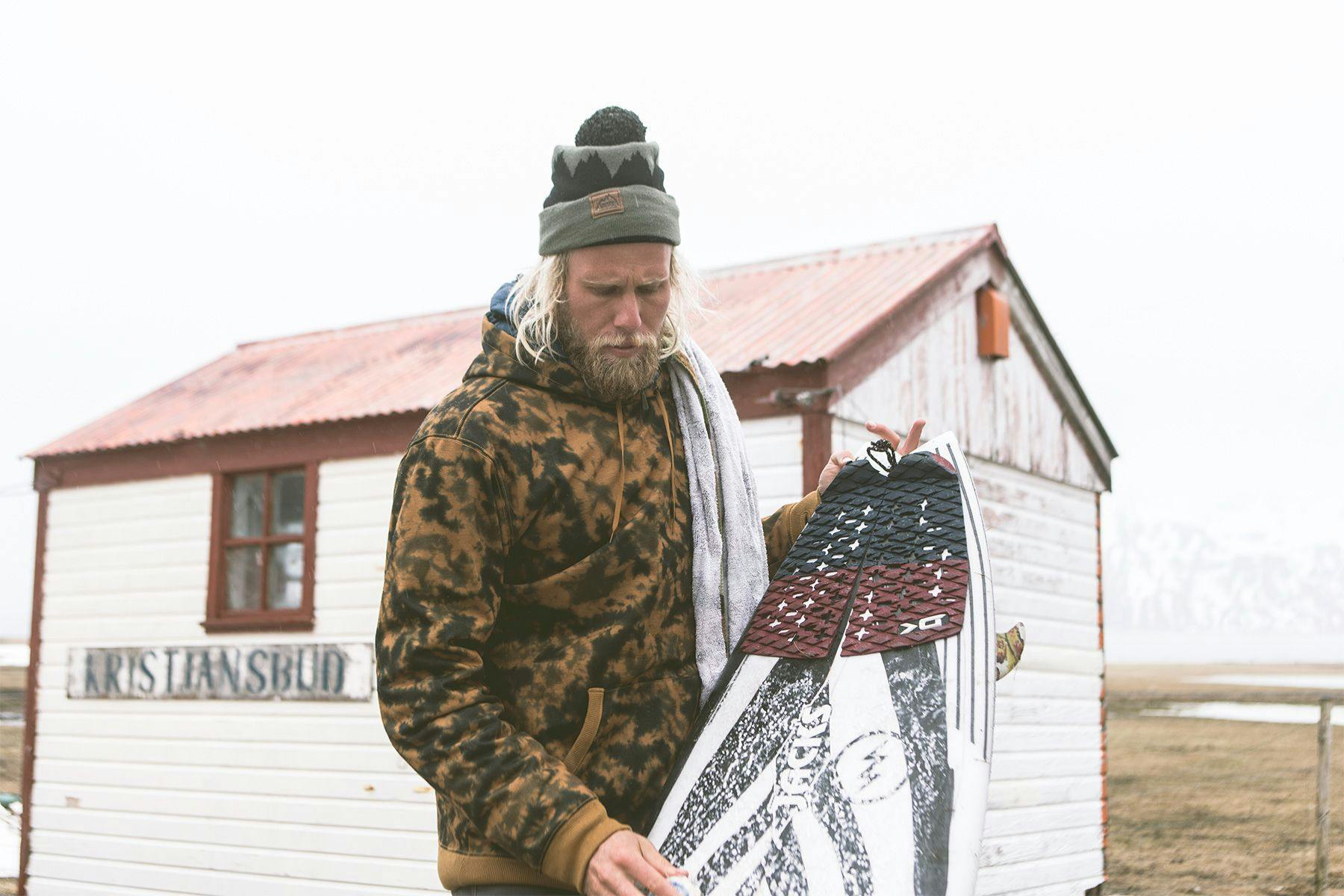
Have you got any upcoming projects that you’re excited about?
I mean, there’re always new and exciting projects. I have a long time project that’s probably going to go for another ten years or so. Basically I’ve been photographing the surf scene and the regular surfers in Iceland for, I don’t know, like eight years now or something. I’ve been photographing them by setting a studio up at the local break that we always go to and I’ll photograph them there on film and then at their homes, and that’s a long term, on-going project that at some point I want to make something out of.
Is that going to become a coffee table book project?
Yes, or an exhibition or something similar. It’s a personal project and not epic surfing photos but more just a document of the people that grow up surfing Iceland and who keep it unique.
What makes Iceland so special for surfers?
It can have incredible waves. You could come to Iceland for a week and you might be chasing your tail all over the place, but you might also score. It has world-class waves and it has more waves than I think people see in the magazines. Surfers wouldn’t come there if there weren’t the waves in the first place. But then the natural environment, that just adds another level on to it. It’s raw. Some people come there and they don’t like it, some surfers love it and they come again and again.
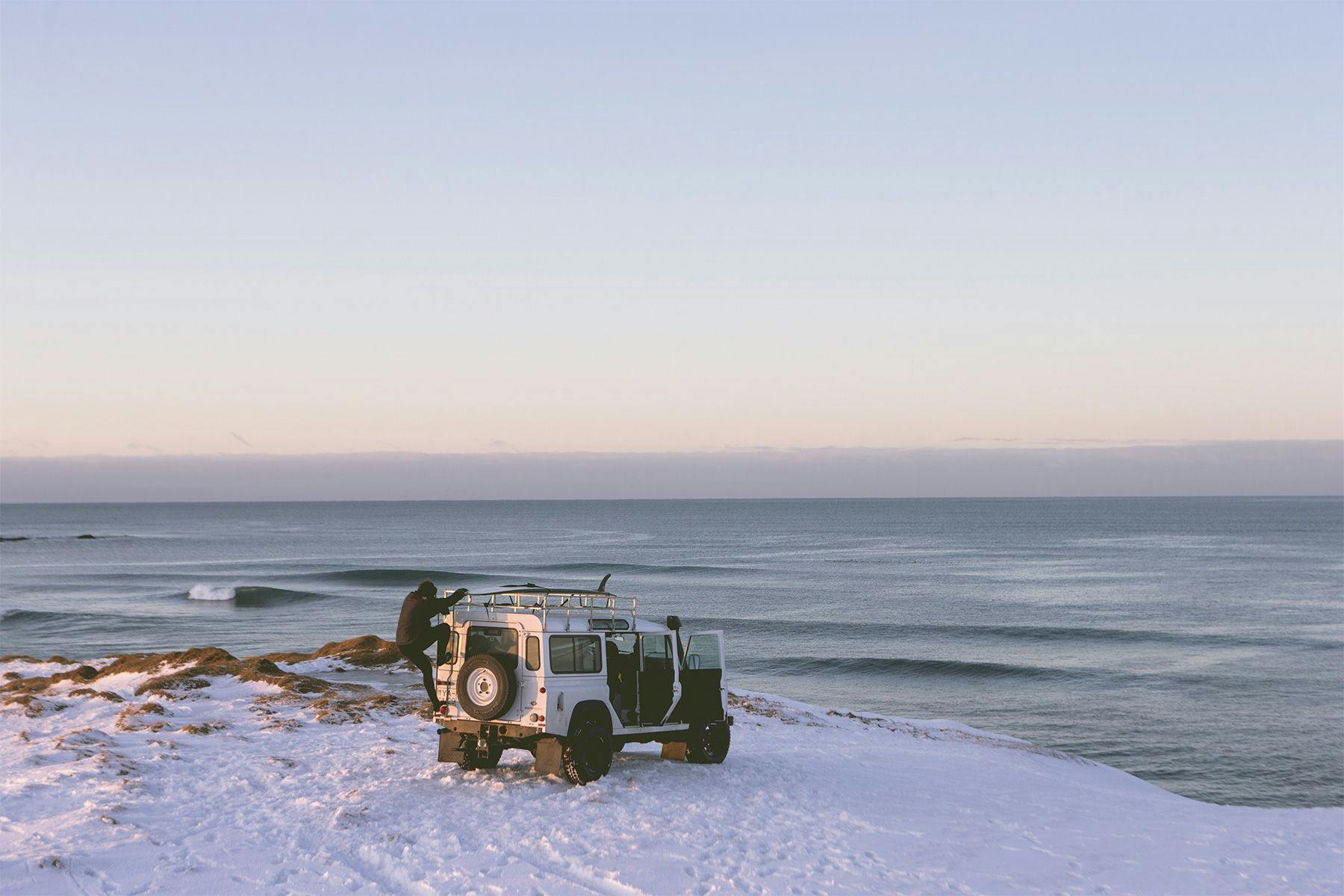
And for photographers? What makes Iceland so special for photographers?
That is the landscape and the light, you know. December and January are the shortest months. If you’re in the north it’s like three and a half or four hours of daylight in those months, but the sun is low for these four hours – it barely crawls over the horizon – and you have the most magical light. And then, even in summer, the weather changes so quickly. You can have super dark and dramatic conditions and then it suddenly opens up and you have this weird light coming through. You know, light is what it’s all about.
In terms of kit, this is something that we tend to ask. For what you do, to be at the top of your game for capturing the best images of surfing in Iceland, what do you need? We mentioned clothing earlier, but the cameras that you use, your transportation, tents, stuff like that.
Firstly, the right clothing as we discussed earlier. Secondly, you need a 4×4 vehicle, preferably a truck on bigger wheels just because you might be driving somewhere and the pass might be closed. That’s one thing, and it’s one expensive thing! You need to be able to charge things in the car. Me and Heidar, we have a Mercedes campervan that has been converted to four wheel drive. It has bigger wheels, and we can charge everything in there, and it has an oil heater to heat it so that we can sleep in it, because you’re chasing all over the place so you have to be able to camp anywhere. You might be like two hours to the next house and if you want to go there and come back again then you’re maybe going to miss out on things.
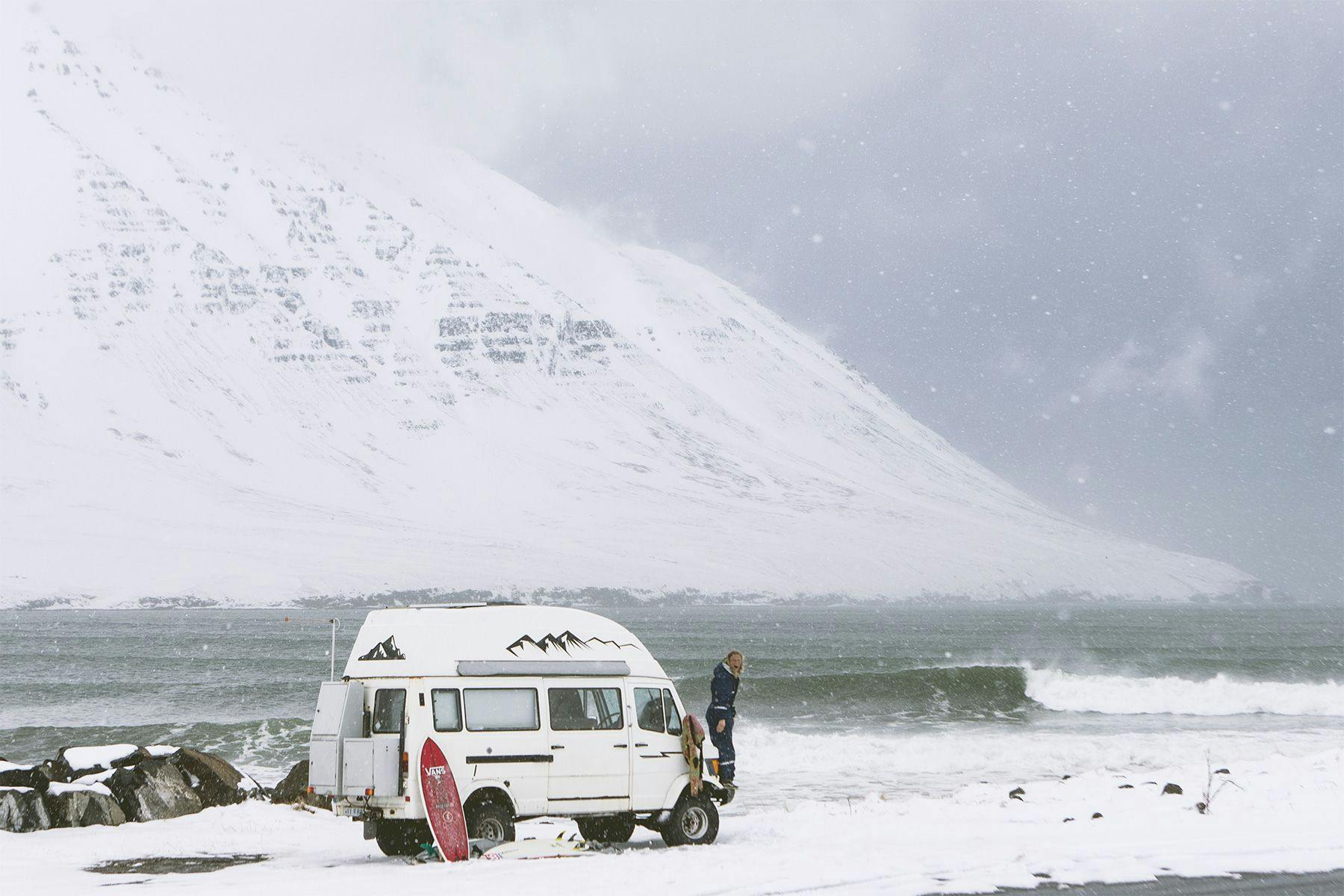
Cameras, I used Canon for seven years or more, eight years probably, and I found them to be incredibly strong and durable, and amazing cameras. I’ve been using them and Sony recently. I use the Sony A6500 for shooting in the water because it’s super light and I have a really good Salty housing for it. The Canon I depend on for the weatherproofing. I have a Canon 1DX and that thing is just a tank, and the Sony for shooting video – I also have the new A7riii which I’m trying out.
Do you have any favourite lenses?
With the Sony I’m still learning about them, but Canon it’s the 24-70L and then a 50 prime, and a 70-200 – that’s like my three main lenses. I don’t particularly like to shoot with a huge telephoto lens. Probably 60% of my surf stuff from land is with the 70-200. That’s the thing, if you’re in Iceland then there is a little bit of “what’s the point’ if you’re shooting surf super tight, because the whole point is the landscape and scenery that the surfing is happening in. So I tend to use a slightly wider lens for that.
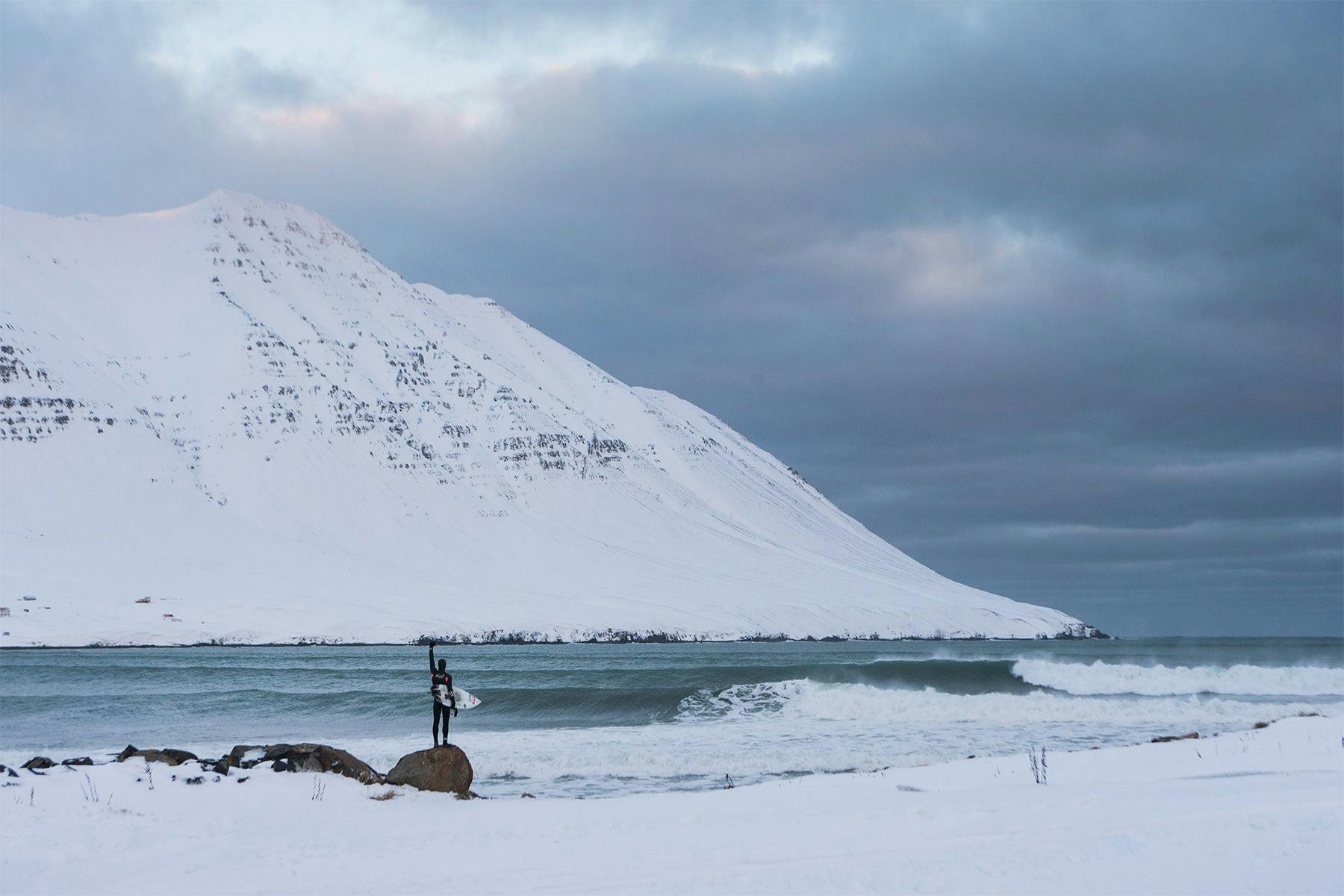
To see more of Elli’s work, check out his website at www.ellithor.com or follow him on instagram at @ellithor.